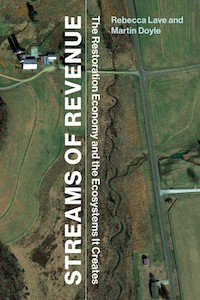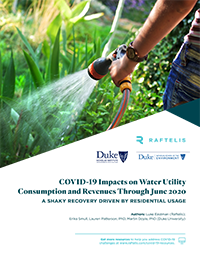Publications
Uncommitted State Revolving Funds
States and the federal government invest in water, wastewater, and stormwater infrastructure by providing subsidized loans and other financial assistance through State Revolving Fund (SRF) programs. The funds are capitalized with federal grants, state contributions, leveraged bonds, and loan repayments. Because the programs largely provide loans rather than grants, the repayment of principal and interest replenishes the pool of capital to finance infrastructure over time. Loan repayments are now the largest source of capital for SRFs.
Toward a National Water Affordability Strategy: Report from the Aspen-Nicholas Roundtable Series on Water Affordability
The Aspen Institute – Nicholas Institute Roundtable Series on Water Affordability convened U.S. water leaders through the fall and winter of 2021 and into January of 2022, to address one of the nation’s most pressing water challenges: ensuring that water services are affordable for all households and communities. With almost 50,000 community water systems across the U.S., developing systemic solutions is no easy task, but it can and must be done.
Measuring Water Affordability and the Financial Capability of Utilities
The cost of providing water services is increasing, placing greater financial burdens on individual households and utilities. Five metrics were calculated at multiple volumes of water usage and were applied to 1791 utilities, estimating bills from 2020 rates data, to gauge financial burdens in four states. More than a fifth of the population in 77% of utilities was experiencing poverty, suggesting widespread poverty is a major contributor to utility financial capability challenges.
Water Consumption and Utility Revenues at the Start of a Pandemic: Insights From 11 Utilities
Key Takeaways
Eleven utilities from across the United States were studied to understand the pandemic's effects on water consumption and utility revenues.
Most utilities in the study saw an overall increase in water consumption with a rise in residential demand that offset declines in nonresidential demand.
Most utilities in the study experienced increased revenues in 2020 compared with previous years, largely due to rate increases, inclining block rates, and an unusually warm summer.
Streams of Revenue: The Restoration Economy and the Ecosystems It Creates
An analysis of stream mitigation banking and the challenges of implementing market-based approaches to environmental conservation.
Growing Options for Shrinking Cities
When people and industries leave a community, water utilities face the potential loss of revenue from departing customers and the cost and issues associated with maintaining excess system capacity.
Water systems seek to (1) ensure affordability, (2) maintain high service and quality, and (3) sustain fiscal viability; this creates a trilemma for shrinking cities that can ensure only two of the three.
Addressing Financial Sustainability of Drinking Water Systems with Declining Populations: Lessons from Pennsylvania
This report focuses on the challenges facing water utilities in areas where population has declined in the Commonwealth of Pennsylvania. A total of 16 water systems were broadly analyzed, with in-depth analyses of four municipal water systems in the cities of Altoona, Chester, Johnstown, and Reading. These four cases highlight some of the overall trends and complications faced by shrinking cities.
2020 Aspen-Nicholas Water Forum Water Affordability and Equity Briefing Document
This paper explores the evolution of water services in the United States. Most people have access to water, most tap water is drinkable, most dams are secure, most farms can grow more with less water, and most rivers are cleaner than they were 50 years ago. Most does not mean all. There is growing evidence that an increasing number of Americans are losing access to safe drinking water and sanitation—and others never had it at all.
COVID-19 Impacts on Water Utility Consumption and Revenues Through June 2020
May and June 2020 data for the eight water utilities in our study show diverging trends of water consumption and revenues as the COVID-19 pandemic continues, with states and local governments taking different approaches and timelines to rolling back restrictions. There are signs of recovery in water consumption and revenues for many utilities, mostly due to high residential consumption and billed revenues, not increased usage from non-residential customers.
COVID-19 Impacts on Water Utility Consumption and Revenues: Preliminary Results
Preliminary data from five water utilities of different sizes and different climates across the U.S. show variable impacts to consumption and billed revenue in response to the global pandemic. Some utilities saw a decline in primarily non-residential consumption of up to 19% and non-residential billed revenue of up to 8% in April, one full month into the pandemic, relative to April usage and revenue in the past three years. For some utilities, consumption and revenues remained similar to previous years.










